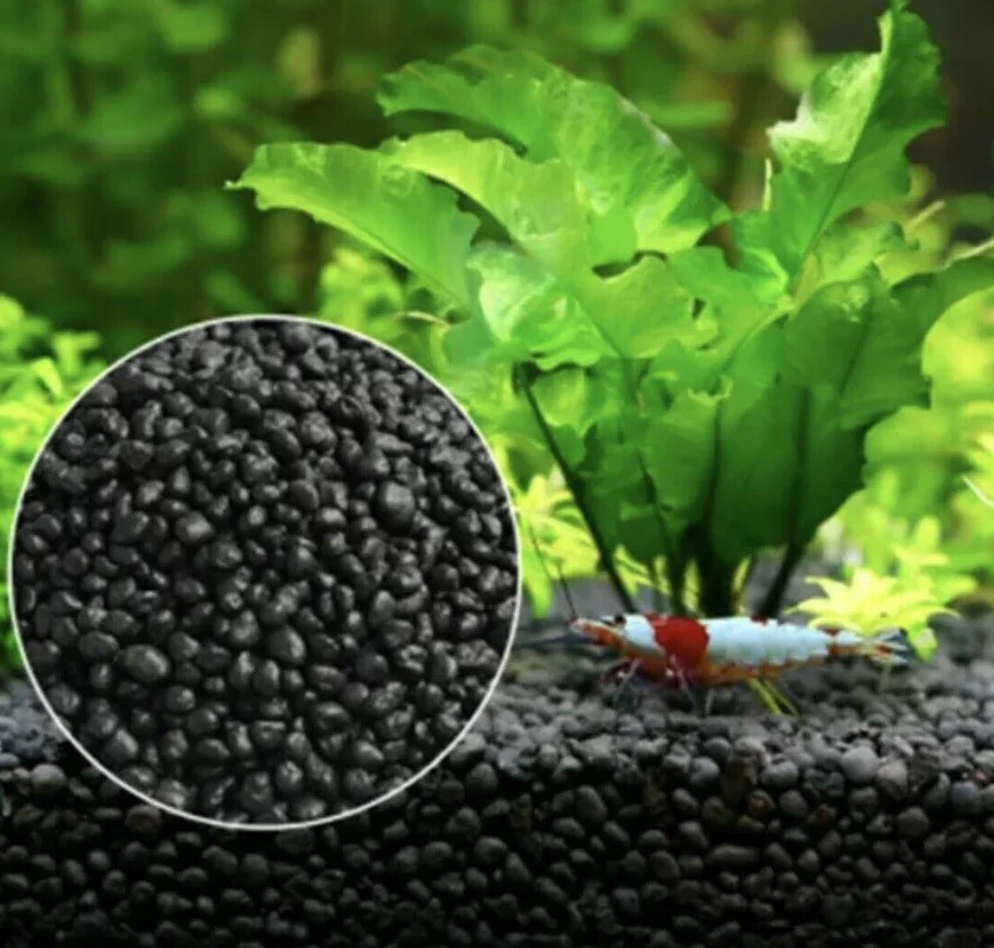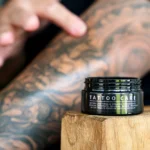Creating a lush, vibrant planted aquarium begins with the right foundation—and in the world of aquascaping, that means aquasoil. Unlike regular gravel or inert sand, aquasoil is a nutrient-dense, biologically active substrate designed to support aquatic plant growth, maintain stable water chemistry, and enhance the overall aesthetics of freshwater aquariums.
Whether you’re building a lush Dutch-style tank, an Iwagumi layout, or a nature-style aquascape, choosing the right aquasoil is critical to your success. In this in-depth guide, we explore what aquasoil is, its benefits, how to use it, top brands, and key considerations for 2025.
What is Aquasoil?
Aquasoil is a specially formulated substrate made from natural volcanic soil, clay, peat, and mineral additives, often baked into pellets or granules. It acts as both a planting medium and a nutrient source for rooted aquatic plants.
Unlike inert substrates, aquasoil actively:
-
Releases nutrients like nitrogen, iron, and potassium
-
Buffers pH (usually slightly acidic)
-
Supports microbial colonies (beneficial bacteria)
-
Promotes strong root development
Benefits of Using in a Planted Tank
| Benefit | Description |
|---|---|
| Nutrient-rich | Delivers macro and micronutrients directly to roots |
| Stable pH | Often buffers water to ~6.0–6.8—ideal for most aquatic plants |
| Improved aesthetics | Dark, natural appearance enhances plant and fish colors |
| Long-term growth support | Slow-release fertilizers reduce need for frequent dosing |
| Bioactive substrate | Encourages colonization of nitrifying bacteria |
| Plant anchoring | Better root grip compared to sand or gravel |
Top Aquasoil Brands in 2025
| Brand | Key Features | pH Buffering | Best For |
|---|---|---|---|
| ADA Aqua Soil Amazonia Ver. 2 | Premium-grade, natural peat | Yes | High-end aquascapes |
| Tropica Aquarium Soil | Pre-fertilized, no need for layering | Slight | Beginner-friendly planted tanks |
| Fluval Stratum | Volcanic origin, lightweight | Moderate | Shrimp tanks and nano aquariums |
| Brightwell Aquatics FlorinVolcanit | Mineral-enriched | Yes | Low-tech and high-tech tanks |
| UNS Controsoil | pH-stable, clean granules | Mild | Aquascapers looking for minimal clouding |
How to Choose the Right Aquasoil for Your Aquarium
Consider these factors:
-
Plant types – Root-heavy plants like crypts and swords need deeper, nutrient-rich layers.
-
Aquarium size – Larger tanks may benefit from higher-grade soils with long-term stability.
-
Fish/shrimp inhabitants – Some aquasoils lower pH, which shrimp love—but not all fish do.
-
Your aquascaping style – Iwagumi layouts may benefit from sleek, fine-grain aquasoils.
-
Budget – ADA is premium; Fluval and Tropica offer mid-range, excellent alternatives.
How to Use Aquasoil in a New Aquarium Setup
Step-by-Step Setup Guide:
-
Plan your scape – Decide where hardscape and plants will go.
-
Add base layer (optional) – For added nutrients (e.g., ADA Power Sand).
-
Pour aquasoil carefully – Avoid disturbing layout—use a scoop or cup.
-
Sculpt elevation – Create slopes for depth (front low, back high).
-
Mist lightly before planting – Keeps soil moist and easy to plant into.
-
Fill slowly with dechlorinated water – Use plastic wrap to reduce disturbance.
-
Cycle tank for 2–3 weeks – Aquasoil releases ammonia during early stages.
Does Aquasoil Need to Be Capped?
No. Unlike dirted tanks, aquasoil does not need a sand or gravel cap. It is designed to:
-
Remain compact
-
Release nutrients slowly
-
Resist clouding when handled properly
However, some aquarists use sand barriers in foreground areas for visual separation.
How Long Does Aquasoil Last?
Typically:
-
Nutrient release: 12–18 months
-
Structural integrity: Up to 2–3 years before it starts breaking down
-
After that, you can supplement root tabs or replace soil during rescape
Signs it’s time to refresh:
-
Plants grow slower
-
Substrate becomes muddy
-
Algae outbreaks increase due to unbalanced nutrients
Aquasoil vs Gravel vs Sand
| Feature | Aquasoil | Gravel | Sand |
|---|---|---|---|
| Nutrients | High | None | None |
| pH impact | Slightly lowers | Neutral | Neutral |
| Rooting support | Excellent | Good | Poor |
| Aesthetics | Natural | OK | Clean, minimal |
| Clouding | Moderate (at start) | Minimal | Moderate if disturbed |
| Best for | Planted tanks | Basic freshwater | Cichlid tanks, aesthetics |
Verdict: Aquasoil is the superior choice for serious plant growth and long-term tank stability.
Common Problems with Aquasoil (and Fixes)
| Problem | Cause | Solution |
|---|---|---|
| Ammonia spike | Natural leaching during initial setup | Cycle tank for 2–4 weeks before adding livestock |
| Cloudy water | Aggressive pouring or disturbance | Fill tank slowly, avoid stirring soil |
| pH too low | Combined with soft water or CO₂ injection | Add crushed coral or use buffering rocks |
| Soil breakdown | Over 2 years old, heavy vacuuming | Replace or mix with new aquasoil |
Can You Mix Aquasoil with Other Substrates?
Yes, but with caution.
-
Mixing with inert gravel can dilute nutrient value
-
Layering with Power Sand or root-enhancers is beneficial
-
Avoid combining with crushed coral or aragonite if pH buffering is needed
Pro tip: Use aquasoil in planting zones and decorative sand in exposed areas.
Ideal Plants for Aquasoil Substrates
| Plant | Growth Benefit |
|---|---|
| Cryptocoryne spp. | Deep roots thrive in rich soil |
| Amazon Sword | Heavy feeder—needs root access |
| Dwarf Hairgrass | Spreads easily in fine-grain aquasoil |
| Monte Carlo | Carpets quickly with nutrient support |
| Ludwigia and Rotala | Bright colors with nutrient access |
Also read: Tattoo Efterpleje: 30+ Proven Tips to Heal and Protect Your Ink
FAQs
Do I need CO₂ injection with aquasoil?
No—but it enhances results. Aquasoil works well in both low-tech and high-tech setups.
Will aquasoil harm shrimp or fish?
It may release ammonia in the first few weeks. Cycle the tank fully before adding livestock. Afterward, it’s very shrimp-friendly due to stable, slightly acidic pH.
Can I reuse aquasoil?
Yes, but nutrient content will be reduced. Use root tabs or liquid ferts if reusing.
Is aquasoil worth the price?
For planted tank lovers—absolutely. It drastically improves plant growth and tank stability.
How deep should aquasoil be?
Ideal depth is 2–3 inches, especially in planting zones. Shallow areas (~1 inch) are fine for foreground.
Conclusion
Aquasoil is the gold standard for planted aquariums—whether you’re building a vibrant jungle tank or a minimalist aquascape. Its nutrient-rich composition, root-supporting structure, and water-buffering properties make it an essential tool for anyone serious about aquatic plantkeeping.
By choosing the right brand, installing it correctly, and pairing it with good cycling practices, aquasoil transforms your tank into a lush, stable, and visually stunning underwater garden.
In 2025 and beyond, aquasoil remains the smart choice for long-term aquatic success.


